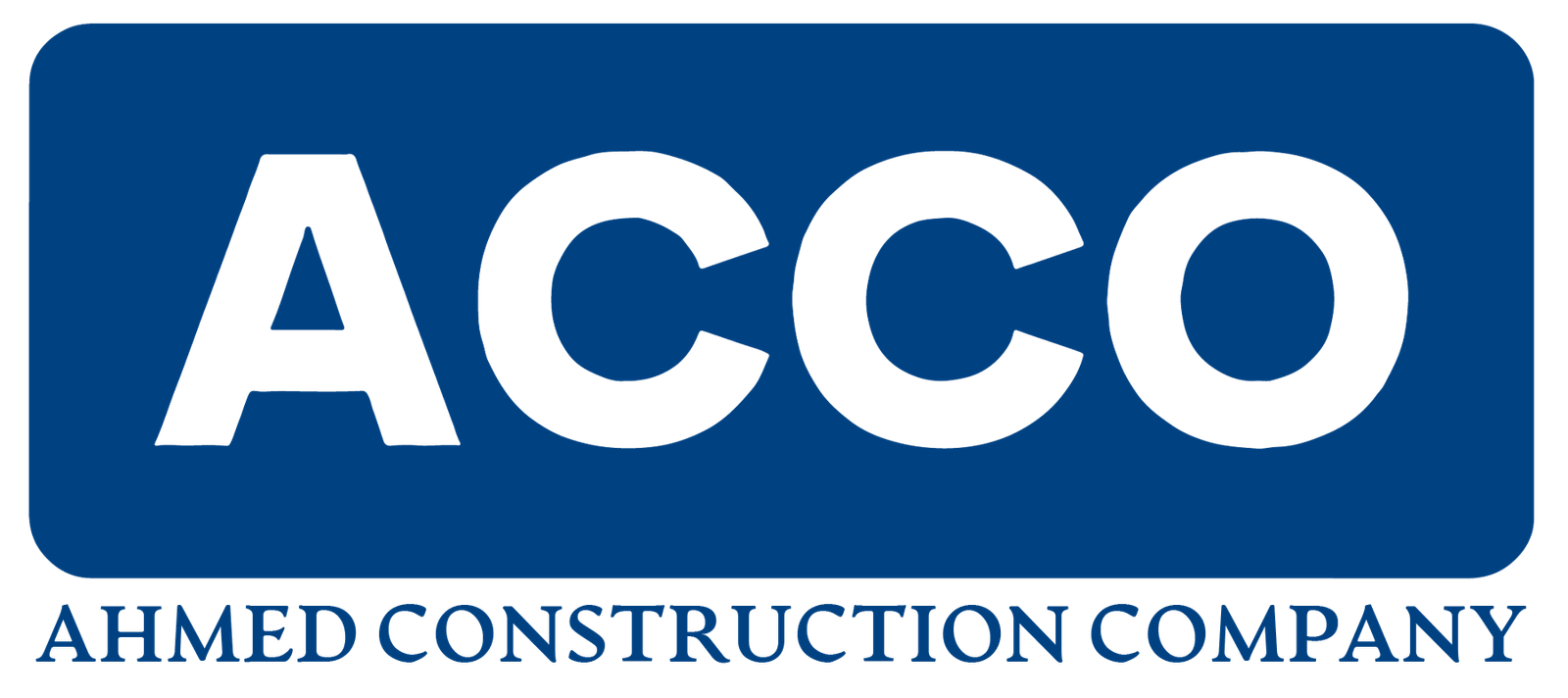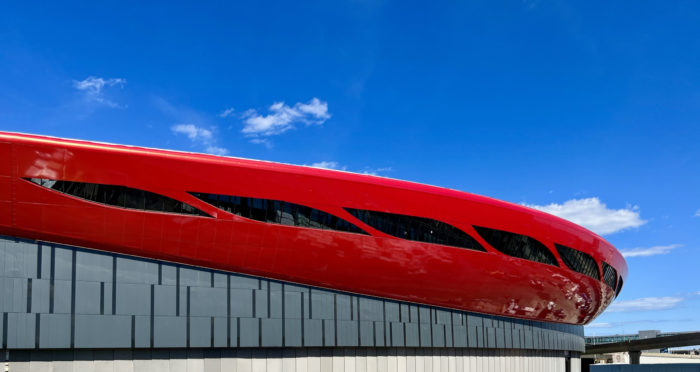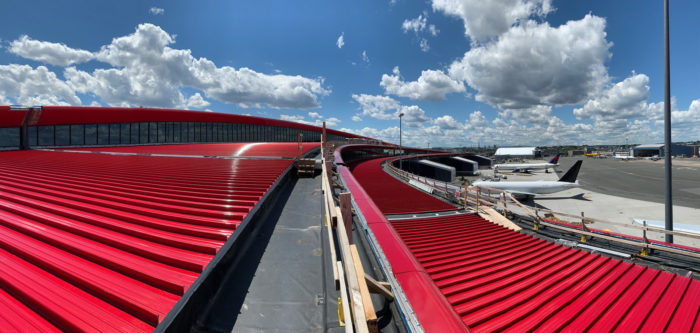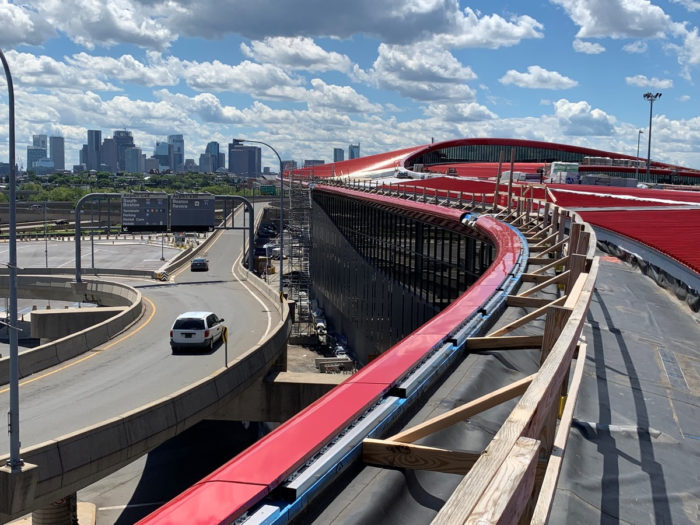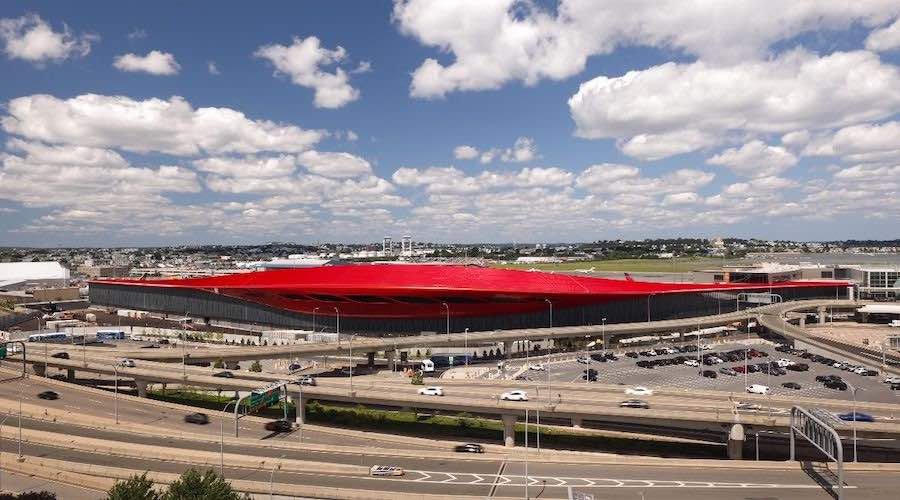
Revitalized Terminal E at Boston Logan International Airport Sets New Standard for International Traveler Experience
AECOM, Luis Vidal + Architects, and Suffolk recently completed the construction of Terminal E at Boston Logan International Airport on a five-year, approximately $640 million project on 390,000 square feet of aluminum set against the backdrop of an eye-catching prismatic yellow roof. The newly constructed section has four new gates, increasing the capacity of the existing international terminal. Interior spaces have also been renovated and modernized, including a new security zone, HVSC system, restaurant, and a massive 21,000-square-foot Delta Sky Club and to create an accessible design.
According to Luis Vidal, the president and founding partner of luis vidal + architects, the outcome is a remarkable and visually impactful structure that embraces sustainable principles. It is specifically designed to offer a distinctive, comfortable, and healthy atmosphere for both passengers and staff. Vidal further characterizes it as a pioneering example of a “Fourth generation” airport design in the United States.
Terminal E expansion Is A Focal Point
During a previous interview with Boston.com, Vidal mentioned that the color ‘Boston Red’ encompasses a range of shades from orange to burgundy to red. This specific hue has strong connections to the essence of Boston, since various iconic symbols of the city are related to the color red. Furthermore, the shading of ‘Boston Red’ aims to replicate the mesmerizing sunsets that can be seen from the terminal. Vidal highlighted that this unique color is exclusively used for Boston Logan and cannot be employed elsewhere.
During the project, AECOM demonstrated an equal commitment to integrating a sustainability strategy into the design and construction of the building. The company has expressed its intention to pursue LEED Gold certification from the U.S. Green Building Council, which underscores their dedication to environmentally conscious practices. The principal architect from AECOM emphasized that the successful completion of the project serves as evidence of the significant demand for travel within the resilient Boston region.
